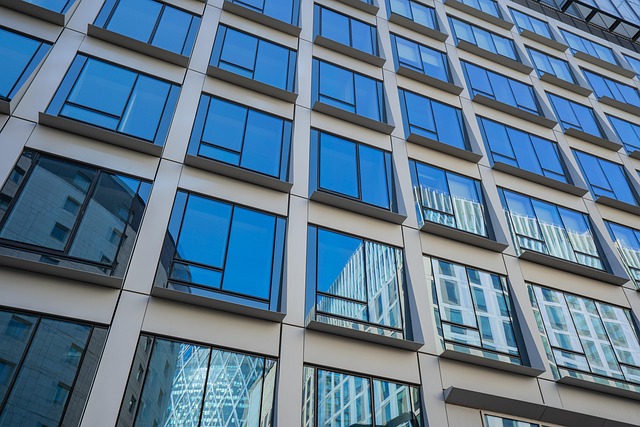Commercial heating systems, particularly unit heaters, significantly impact operational expenses in large industrial spaces like warehouses. Energy-efficient models, including gas fired and electric heaters, offer advanced features like forced air heating for even temperature distribution and optimized energy utilization. This is especially beneficial for warehouse spaces, promoting sustainability and substantial cost savings while enhancing comfort. Versatile, compact designs target specific areas efficiently, with adjustable BTU capacity to suit diverse needs. Strategic implementation reduces facility heating costs, making unit heaters a game-changing solution for commercial and industrial heating.
In today’s cost-conscious climate, managing facility heating costs is paramount. Unit heaters, known for their energy efficiency, offer a compelling solution to reduce energy bills and minimize environmental impact. This article delves into the world of unit heaters, exploring how these compact yet powerful devices can significantly lower heating expenses while enhancing comfort and sustainability in various facilities. From understanding heating cost dynamics to implementing efficient strategies, discover why unit heaters are a smart choice for smart facilities.
- Understanding Facility Heating Costs and Their Impact
- Introduction to Energy-Efficient Unit Heaters
- Key Features and Benefits of Unit Heaters
- Strategies for Implementing Unit Heaters to Reduce Costs
Understanding Facility Heating Costs and Their Impact

Understanding Facility Heating Costs and Their Impact
In today’s business landscape, managing energy consumption is more than just an environmental responsibility; it’s a strategic cost-saving measure. Commercial heating systems, often overlooked, significantly contribute to operational expenses, especially in large industrial spaces like warehouses. These facilities require robust yet efficient heating solutions, such as unit heaters, to maintain comfortable temperatures throughout the year. Heating costs can vary widely based on factors like square footage, insulation, and climate, but they generally represent a substantial portion of overall facility maintenance budgets.
By adopting energy-efficient unit heaters, businesses can substantially reduce their BTU capacity requirements and associated costs. Gas fired units, electric heaters, and even suspended heaters or ceiling-mounted systems offer advanced features like forced air heating that distribute warmth evenly, eliminating hot spots and ensuring optimal energy utilization. This is particularly beneficial for commercial heating in warehouse applications, where maintaining consistent temperatures across vast spaces can be challenging. Ultimately, transitioning to efficient heating systems pays dividends in both environmental sustainability and financial bottom lines.
Introduction to Energy-Efficient Unit Heaters

Energy-efficient unit heaters are transforming the way we heat commercial and industrial spaces, such as warehouses. These advanced heating solutions offer a significant upgrade over traditional forced air heating systems, boasting features like ceiling-mounted designs and innovative technologies to maximize energy efficiency. By reducing BTU capacity and optimizing heat distribution, these suspended heaters, whether gas fired units or electric models, can substantially lower facility heating costs without compromising performance.
Whether for large industrial spaces or more specialized warehouse applications, modern unit heaters are designed with versatility in mind. Their ability to provide precise, targeted heating makes them ideal for diverse environments, ensuring optimal comfort and efficiency. As businesses seek sustainable and cost-effective solutions, these energy-efficient units are becoming the game changer in commercial heating, promoting both environmental stewardship and substantial savings.
Key Features and Benefits of Unit Heaters

Unit heaters, a popular choice for efficient heating solutions, offer a range of key features that make them beneficial for various settings, from warehouses to industrial spaces and commercial buildings. These compact and versatile devices are designed to provide targeted heat, focusing on specific areas rather than warming an entire space, which is a significant advantage in terms of energy conservation. With options available as gas fired units or electric heaters, they cater to different preferences and requirements.
One standout feature is their ability to deliver forced air heating, ensuring even temperature distribution. This is particularly useful in large or tall industrial spaces where maintaining consistent warmth can be challenging. Additionally, the ceiling-mounted design of many unit heaters allows for discreet installation, contributing to a more aesthetically pleasing environment. Their BTU capacity can be tailored to suit different needs, making them suitable for various applications, from small storage areas to vast warehouse facilities.
Strategies for Implementing Unit Heaters to Reduce Costs

Implementing energy-efficient unit heaters is a strategic move to reduce facility heating costs significantly. One effective approach is to choose the right type of heater for specific spaces, such as warehouse applications or industrial spaces. For instance, gas fired units and electric heaters offer varying BTU capacities, catering to different heating demands. Gas fired units excel in large, open commercial heating areas due to their high heat output and cost-effectiveness. Conversely, electric heaters are ideal for smaller, contained spaces where precise temperature control is needed.
Suspended heaters and ceiling-mounted units provide versatile solutions for both industrial and commercial settings. Forced air heating systems, when integrated with these unit heaters, enhance energy efficiency by distributing warm air evenly throughout the space. By strategically placing these heaters in key areas, businesses can optimize their heating systems, ensuring every corner of the facility is comfortable without unnecessary energy expenditure.
Unit heaters, with their energy-efficient design, offer a compelling solution for reducing facility heating costs. By embracing these innovative heating systems, facilities can significantly lower energy consumption and associated expenses. Implementing unit heaters, coupled with strategic placement and proper maintenance, ensures optimal cost savings while maintaining comfortable indoor environments. This shift towards energy efficiency not only benefits businesses but also contributes to a more sustainable future.
